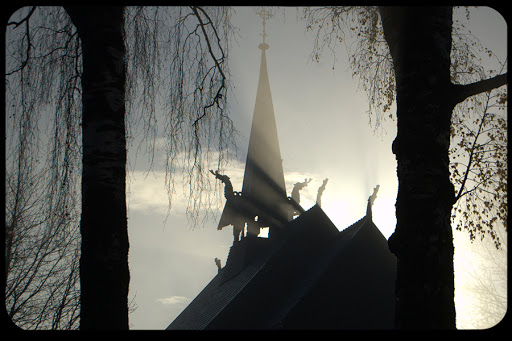American travelers to Europe might arrive thinking they are visiting a continent where religion – or at least Christianity – is all but extinct, having succumbed to massive secularism. Particularly if those travelers arrive anywhere near Easter, though, they would quickly be surprised if not shocked to see just how strong the underlying Christian framework remains.
I recently spent a pleasant time in Norway, which, like other Scandinavian lands, is not noted for strong religious sentiments or behavior. Yes, people are usually baptized and confirmed, although in decreasing numbers, but regular church attendance is very low indeed by U.S. standards. Yet the country has a full roster of strictly religious holidays, amazingly so for Americans who are used to a rigid separation between religion and public life. American public schools and state universities must tread a thin line at times like Good Friday, when they know, realistically, that virtually no Christian students will attend classes. Rather than admit that fact openly, though, secular institutions try to maintain a façade of staying open, while effectively granting students and teachers the right to be absent.
How different matters are in Europe, and how overt the religious affirmations! Norwegian holidays officially include Palm Sunday, Good Friday, Easter Day and Easter Monday, but in practice, the consolidated “Easter holidays” stretch for over ten days, and are strictly observed. The day before the Palm Sunday weekend, train stations and airports were overwhelmed with city dwellers fleeing to holiday homes, and this year, many businesses are closed from March 27 through April 7. As one of my generous hosts put it, he would be happy to undertake a chore for me “when Norway reopens.” Later in the year, Norway celebrates one holiday for Ascension, two days for Whit or Pentecost, and two for Christmas. And as at Easter, all these holidays are subject to a pattern of unofficial expansion that can spread over several days.
Nor is Norway’s calendar unusual in its religious orientation. Catholic countries are famous for their proliferation of saints’ days and religious-based public holidays, when work shuts down entirely. Apart from the Christmas and Easter season, Italians observe All Saints, as well as the Marian holidays of the Assumption and the Immaculate Conception. Yet even the holiday calendar of Protestant Denmark includes three weekdays around Easter, three for Christmas, and two for Pentecost, as well as Ascension and Common Prayer Day (Store Bededag). Depending on where you are in religiously mixed Germany, you will run into a wide variety of feasts and festivals, either generically Christian or specifically Catholic.
This is not to say that the vast majority of Europeans mark these holidays by religious activities of any kind, or even that they could give any informed account of what Easter actually means. It does however suggest the residual strength of Christian faith across much of the continent. One of the best sociologists of European religion is Grace Davie, who stresses that falling levels of observance and church attendance cannot simply be equated with pure secularism, suggesting instead that people are “believing without belonging.” Presently, strict secularism is very advanced among cultural and political elites, but has not yet made enormous inroads among ordinary people.
Davie argues that the Christian presence still remains potent through social memory, as reflected for instance in public holidays. This is all the more potent in cities and small towns that still retain the Christian imprint on every street, every Heiligegeiststrasse (Holy Spirit Street) and Paternoster Row, and in which the whole urban plan is still shaped by parish boundaries. Across Europe, neither God nor the church is easy to miss. You know when you have arrived in Catholic Bavaria or Austria when people start greeting you with Grüss Gott (Greet God, or originally “God guard you”), rather than the coldly secular Guten Tag, which sounds so foreign and German. The ghosts of faith walk everywhere.
No observer would claim that Western European countries in particular are aflame with piety and public devotion, and actual church participation might be weak. Rather, we see a great deal of cultural Christian faith, which exists steadily, but which does not normally flame into public view. As Grace Davie remarks, Europe’s cultural Christians are “content to let both churches and churchgoers enact a memory on their behalf,” secure in the knowledge that Christianity is there if and when they need it. The churches represent accumulated capital that can be drawn on as needed.
In this comfortable and non-demanding sense, most do still define themselves, however vestigially, as Christians. The question for Europe’s churches is whether they can find ways of mobilizing this popular sentiment into more overt forms of faith.
Philip Jenkins is a Distinguished Professor of History at Baylor University and author of The Great and Holy War: How World War I Became a Religious Crusade.

